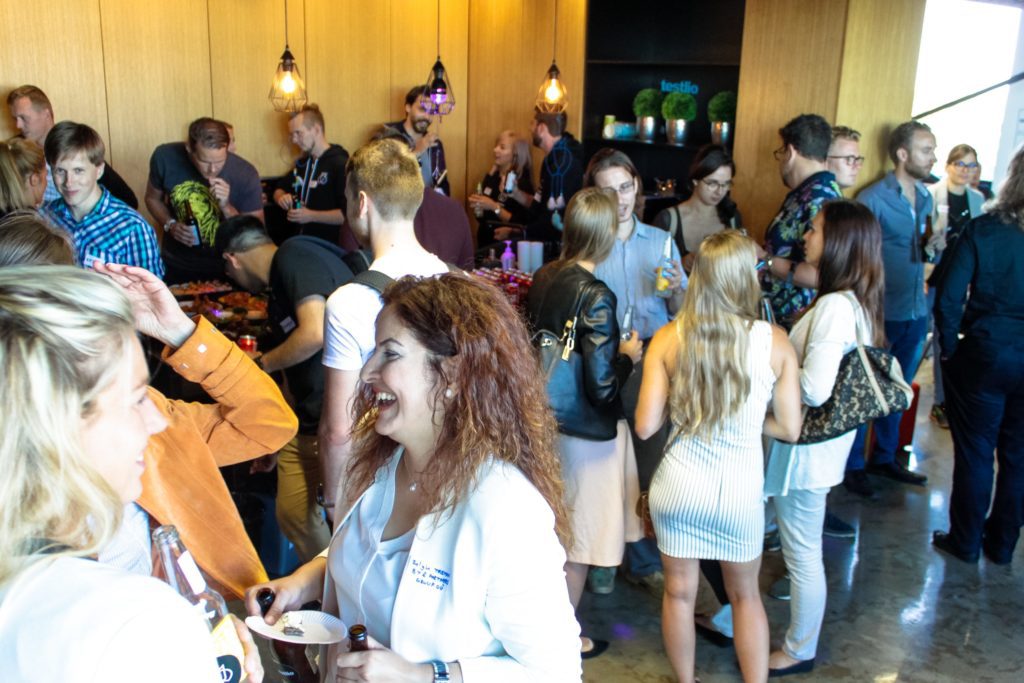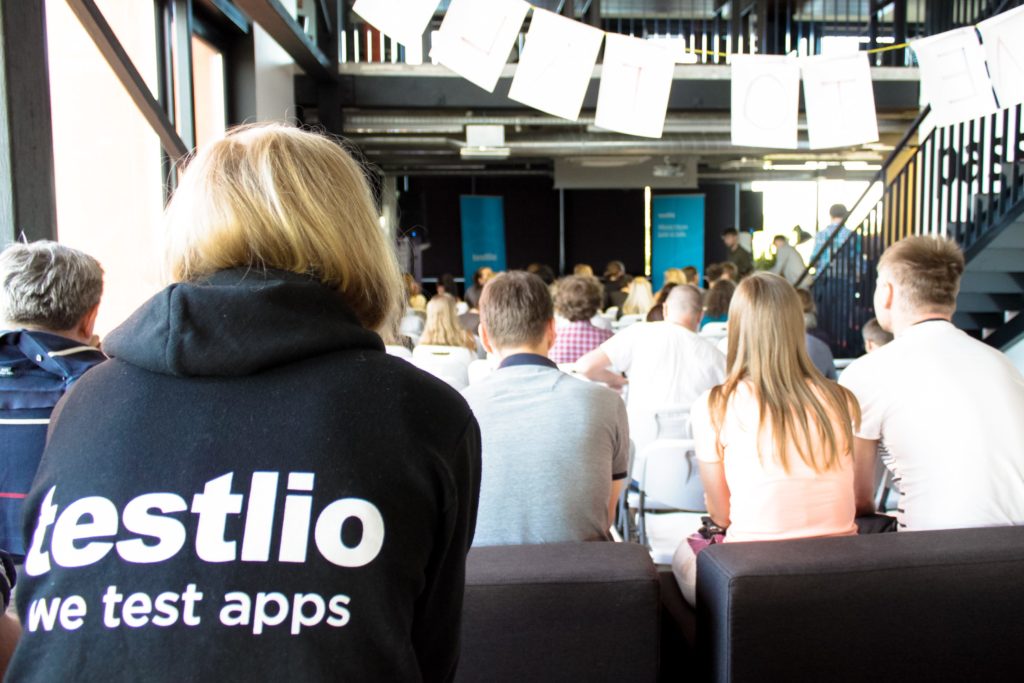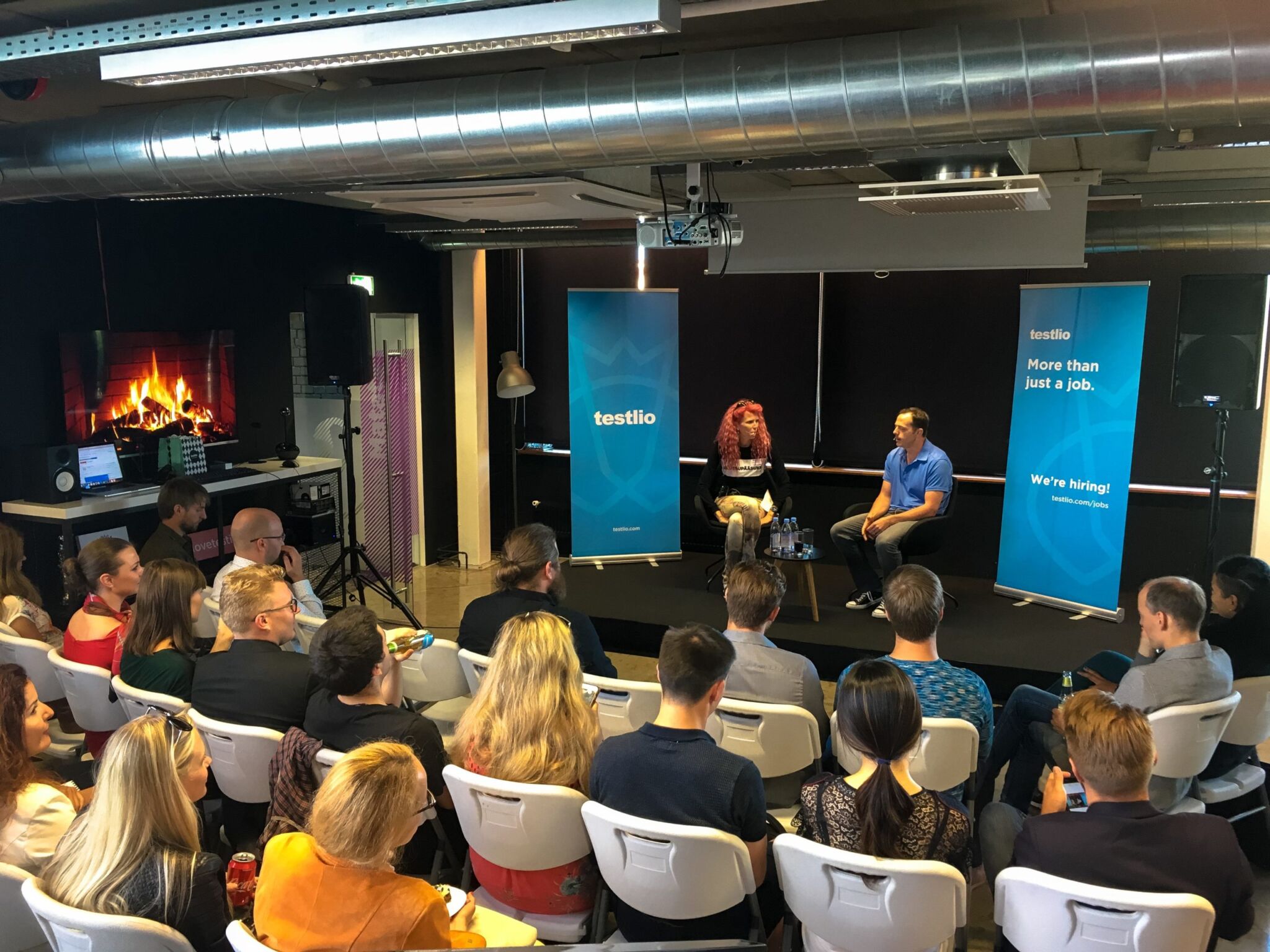Fireside Chat: Testlio CEO Talks QA, DevOps and Acompli with Kevin Henrikson

Testlio CEO Kristel Kruustük recently sat down with Partner Director of Engineering at Microsoft Kevin Henrikson at an informal and well-attended fireside chat. It was so popular, in fact, that when Henrikson signed up for his own event, he was put on the waitlist.

In case you missed it, I’ve got all the highlights—what you can ask to disarm anyone, what it takes to recruit top talent, the hunger of start-ups in their early days, and how to push past resistance to change.
Introducing Kevin Henrikson
“Kevin has been so fast-moving his entire career, and for him, business is like a game,” Kruustük says. Testlio co-founders Kristel and Marko Kruustük often refer to their “What Would Kevin Do?” posters, because, as one of their first customers, he was so influential in the formation of the company and helped inspire much of what sets Testlio apart. But we’ll get into that in a second.
First: a look into Henrikson’s past.
It’s easy to see why Kruustük calls him “fast-moving.” Henrikson started applying for development jobs before even finishing college. When he landed a gig as an HTML developer instead of seeking out a summer internship, he simply failed to mention that he wasn’t done with college because they “didn’t ask.” When school started back up, he had to work just two days a week to finish up his last year, and by then he was already managing a team of ten.
He moved on to work as Director of Engineering at Zimbra, an online/offline suite of apps that was acquired by Yahoo and later by VMWare.
After working with VC firm Redpoint Ventures, Henrikson co-founded Acompli, which was acquired by Microsoft for over 200 million in 2014.

The Acompli story
During Henrikson’s entrepreneur in residence at Redpoint Ventures, he was wholly against developing anything for email, having been in the email game for so long. But when Dropbox acquired Mailbox in 2013, he thought it strange that the iOS app only worked for Gmail, since Gmail is a free product. “Winning against a free product is not fun,” Henrikson explains. He realized that an app that would allow the user to open multiple email sources, and take easier action, could have a big market.
After a Javascript demo and a 9-slide presentation, both put together in a single weekend, he and a small team had succeeded in raising the 5 million dollar seed fund requested to start building.
The biggest question being asked by Acompli’s VCs was monetization. “There were a lot of apps that no one paid for. But there are lots of companies that pay a lot of money for people to have secure email,” Henrikson explains. Their market was enterprises that did not use Gmail and free services, but rather paid for ESPs that didn’t yet have usable mobile apps.
Hiring a hungry team
When first building out the team, the Acompli recruiter phone-screened 150 iOS developers to ultimately hire three. Once past the initial screening, Henrikson was part of the interview panel, and he knew exactly what he was looking for: the ability to solve problems.
“Most developers can’t solve a common problem because they copy and paste,” he says. “They just stumble through.”
He also had a few difficult development questions to weed people out and discover raw engineering talent. One such question was How do you get 60 frames per second scrolling on an infinitely long list on an iPhone?
“If the person didn’t say reuse cells and manage memory and reuse CPU usage, then I knew they were not on the right track and I would release them,” Henrikson explains. Beyond raw talent, they were looking for cool people that were enjoyable to work with. To move quickly, one of the early decisions made was to ship every Friday—no matter what—and to not go home until the team had shipped.

Acompli problems that led to Testlio solutions
Initially, the Acompli team was doing their own QA. They would switch from testing the staging app to testing the live app, and they would have weekend parties to test together. Once they realized that method wouldn’t scale, they began looking for a QA vendor.
They built up teams in India to “bang on the app” but were getting repetitive bugs—as in one issue logged for each special character in a form field that caused the app to crash.
Henrikson saw Keen IO CEO Kyle Wild wearing a Testlio t-shirt, and reached out to the new Techstars grads. As one of Testlio’s first customers, Acompli’s requests helped forge Testlio’s offering.
I never had to write the test plans….I’m all about productivity hacks. How can I get somebody to help me? Testlio can help with quality. I would get an email about a bug and I would just forward it to Marko, you guys find this. You turned quality into a service. Not just banging through a bunch of steps like robots, but actually thinking of quality as a solution. Like people are complaining in the app store, we’re seeing this feature request and user voice, how do you work that into a thoughtful plan? — Kevin Henrikson, Partner Director of Engineering, Microsoft
Testlio was thinking about QA on a higher level and was definitely hungry. They wove the reproduction of customer-found issues and the creation of test plans into their subscription based-model at a time when they were thinking about QA on a higher level and building out the details of the service.
Re-entering the enterprise world
Between finishing up college and joining Zimbra, Henrikson had experience developing in an enterprise environment. And now with the acquisition of Acompli, he found himself in a massive organization.
He went from working on weekly releases of a two-year old base to helping speed up release cycles for a 25-year old code base that shipped every other month. His ability to help people push past resistance to going agile is fairly simple. It stems from a “just do it” mentality. If people said there was no way they could release every week because the code was so massive it took three days to ship, then his response was to code for two days to make it happen.
But what has really helped him succeed at Microsoft is one simple, but very disarming question: “How can I help you?” Maybe someone was coming to him with a complaint, or even a vendor looking for a sales call. That one simple question flips whatever script the other party had been planning in their mind, cuts right to the chase, and helps Henrikson present himself as someone looking to give rather than get.
To get all the details on Henrikson’s approach to entrepreneurship, team-building, and success in the tech industry, be sure to catch the fireside chat in full on Testlio’s YouTube channel:
To be notified of future fireside chats and events with awesome people in tech, please sign up here.
